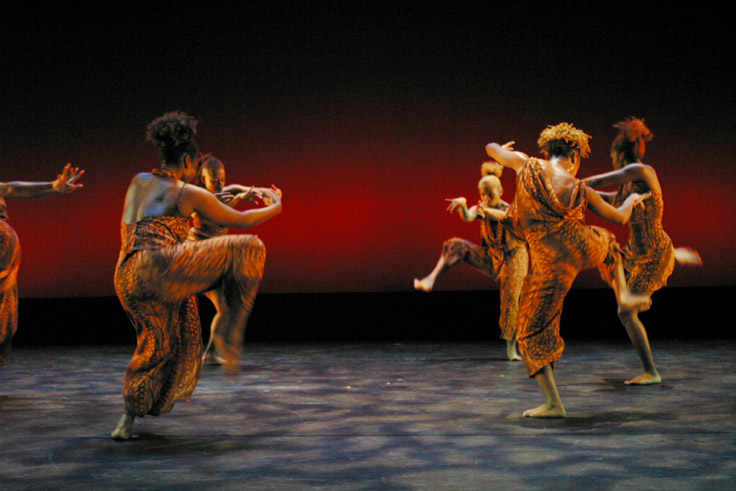 |
 |
 |
 |
 |
 |

Collective Of Black Artists was founded in Toronto in 1993 by Charmaine Headley, Junia Mason, and Eddison B. Lindsay. They have a mandate consisting of two parts: First is to foster a forum for Afro-descent choreographers and performers, second, to preserve African and Caribbean dance, rituals, and forklore in the purest forms possible. At the same time though, they create contemporary works that express issues from the black migration (Diaspora). Unlike the other two companies (Canboulay & Ballet Creole), COBA does not try to fuse the two styles, but instead put them next to each other, to highlight contrast and similarities. “Coba was also formed to fulfill a need within the community, the community events in the area of Toronto had no representation of traditional African dance” says co–founder Edison B. Lindsay in article “Smooth rhythm, Soulful dance.”1
Identity
In the article Roots Keep COBA Grounded, Lindsay tells about how he uses his own identity and everyday experiences an inspiration for his work. For example, in 2000, the mission behind his performance Griot’s Jive was to end gun violence and reconnect with tradition. His inspiration came in the summer of 2000 when he was shocked by hearing reports of three people being killed in shootings. All three people were black, between the ages of 16 and 20. He thought this was insane, and something wasn’t right.
He started thinking about his own life, regarding his upbringing in Trinidad, and realized that what kept him grounded in life was having a foundation in tradition and culture. He felt like a lot of young people today don’t have that reference. He needs to have roots and know where you come from, to be grounded and centered in life. And it is this lack of identity, he sees as the cause for the violence among young people in the Canadian society. Therefore, Lindsay sees it as a responsibility to preserve the traditions of African and Caribbean culture in society, to bring people back to their roots.
Memory
Applying Lindsay’s outlook to the article On Collective Memory by Maurice Halbwachs,2 the author stresses that memory depends on the social environment that people live in. He explains that there is a collective and social framework for memory; our individual thought places itself in this framework and participates in this memory that is capable of the act of recollection. The question regarding what happens with individual memory when there is no collective memory anymore, relates to views of Lindsay where he says that people need to know their roots to be grounded. Lindsay stresses in the article Roots keep COBA Grounded, that the African history month once a year, is not enough to reconnect people with their roots. “People wear a lot of beads, head wraps and locks, but it's all within the pop culture of today -- it's not in the true sense of being grounded and knowing who you are. I felt like we were losing our spirit.”3 In his work Lindsay try really to reconnect people with their roots, a piece of what they can call a collective memory.
For more information on COBA, please check out the following sites:
http://www.cobainc.com
Smooth rhythm, soulful dance by Bill Adams, Brock press – Arts and entertainment, 2/4/03
Roots keep COBA Grounded by Bonnie Kim, eye - 02.21.02
Rites of Passage by Paula Citron, Evalu8-The Globe & Mail, Page R3 February 19, 2004.
Footnotes
1 Smooth rhythm, soulful dance by Bill Adams, Brock press – Arts and entertainment, 2/4/03
2 Halbwachs, Maurice, On collective memory, (University of Chicago Press, 1992).
3 Roots keep COBA Grounded by Bonnie Kim, eye - 02.21.02